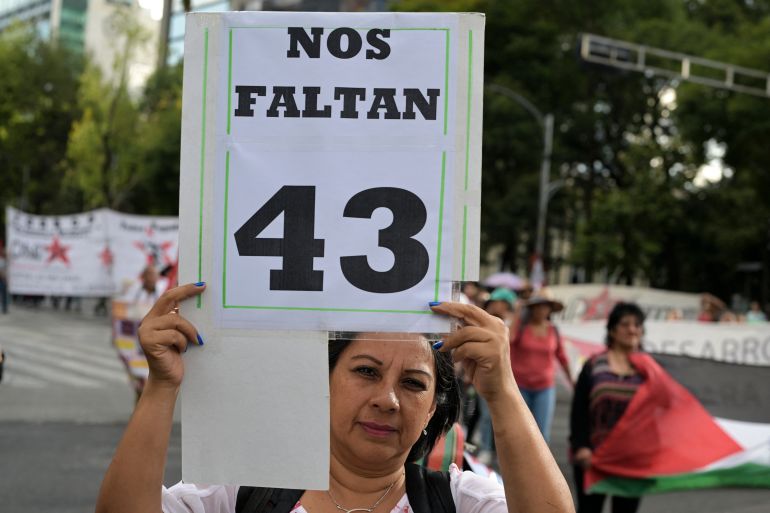Mexico arrests alleged cartel kingpin tied to 43 missing students
Gildardo Lopez Astudillo’s arrest comes weeks before the 10th anniversary of the students’ disappearance.
A woman holds a banner that reads ‘We have 43 missing’ in Spanish as she marches to demand justice for 43 students who disappeared from Iguala, Mexico a decade ago, on August 26, 2024 [Yuri Cortez/AFP]Published On 7 Sep 20247 Sep 2024
Authorities in Mexico say they have arrested an alleged cartel chief linked to the decade-old disappearance of dozens of students.
Gildardo Lopez Astudillo, the suspected cartel leader, was detained on charges of “organised crime” and taken to the Altiplano maximum security prison in south-central Mexico, Reuters news agency reported, citing a federal security source.
This is the second time Lopez Astudillo, known as “El Gil”, has been jailed since the cartel he allegedly leads was accused of orchestrating the disappearance and suspected murder in 2014 of 43 students in Iguala, a case that rocked the nation and ignited years of protests.
The arrest of Lopez Astudillo comes as relatives prepare demonstrations to mark the 10th anniversary of the students’ disappearance.
He was first arrested in 2015 before being released in 2019 after a judge found the evidence against him was obtained illegally.
Lopez Astudillo later served as a protected witness for the prosecution’s office, offering alleged details about the criminal group’s involvement in the students’ disappearance, according to the El Pais newspaper.
What happened to the missing students?
In September 2014, the 43 students who had been travelling to a political demonstration in Mexico City were, investigators believe, kidnapped by the Guerreros Unido drug cartel, in collusion with corrupt police.
The exact circumstances of their disappearance are still unknown, but a truth commission set up by the government has branded the case a “state crime”, saying the military shared responsibility, either directly or through negligence.
Arrests have been made or ordered for dozens of suspects, including military personnel and a former attorney general who led a controversial investigation into the mass disappearance.
The remains of only a few of the victims have been identified.
